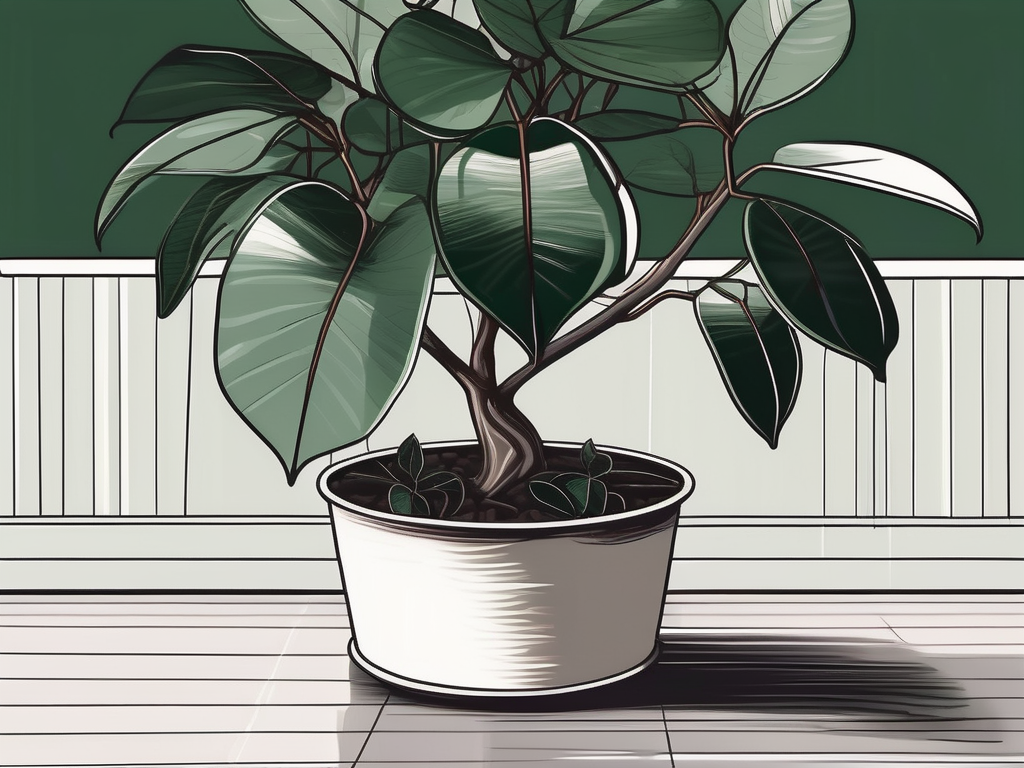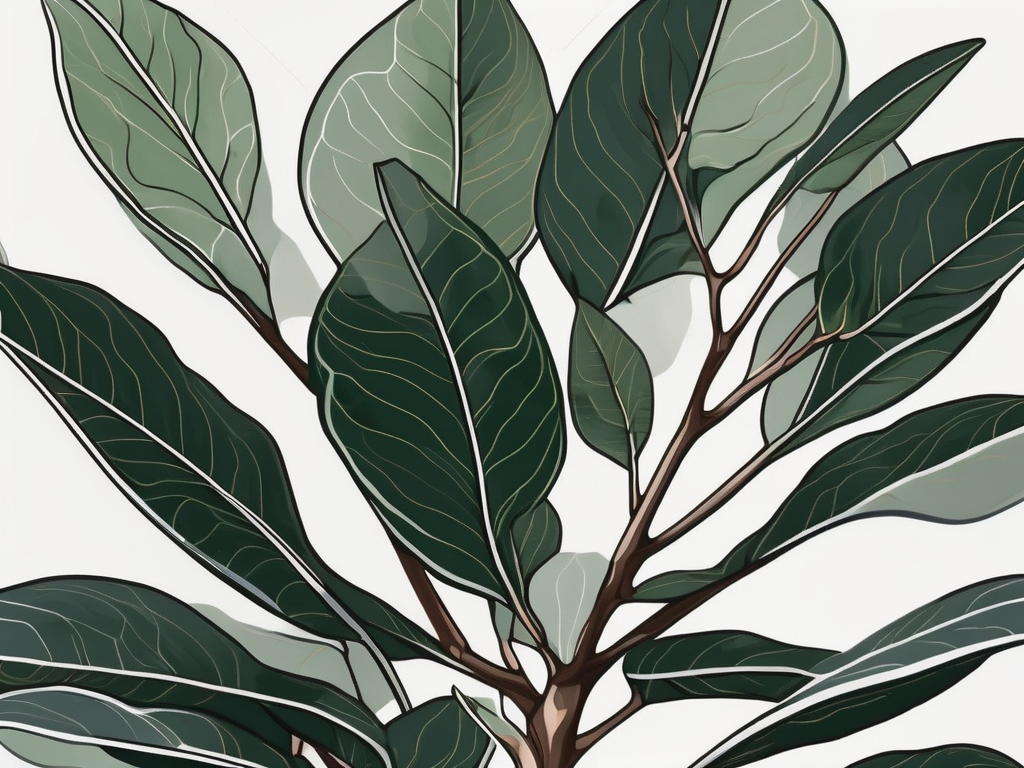
Rubber trees, with their glossy leaves and robust growth, are a favorite among plant people. They bring a touch of the tropics into our homes and don't demand too much in return. However, like all living things, they do need a little care to thrive. One of the keys to a healthy rubber tree is the right fertilizer.
In this article, we’ll dive into the world of rubber tree fertilizers. We'll explore what makes a good fertilizer, how often you should feed your plant, and some options you might want to consider. By the end, you’ll have a clear understanding of how to give your rubber tree the nutrients it needs to grow big and strong.
Understanding Your Rubber Tree's Needs
Before we get into the specifics of fertilizers, it’s important to understand what your rubber tree needs. Native to Southeast Asia, these plants love warm, humid environments. While they can adapt to lower light, they prefer bright, indirect sunlight. When it comes to feeding, they have specific nutrient requirements that help them maintain their lush appearance.
Rubber trees primarily need nitrogen, phosphorus, and potassium, often referred to as N-P-K. Each of these nutrients plays a unique role:
- Nitrogen (N): Essential for leaf growth and the rich, green color.
- Phosphorus (P): Supports root development and overall plant health.
- Potassium (K): Helps with water regulation, disease resistance, and overall growth.
Understanding these needs will guide you in selecting the right fertilizer. Remember, the goal is to mimic the nutrients your plant would naturally receive in its native environment.
Choosing the Right Fertilizer
When it comes to picking a fertilizer, you have a few options, each with its pros and cons. The main types include liquid, granular, and slow-release fertilizers. Let’s take a closer look at each one:
Liquid Fertilizers
Liquid fertilizers are easy to apply and are quickly absorbed by the plant. They usually come in a concentrated form that you dilute with water. This type of fertilizer allows for precise control over the amount of nutrients your plant receives. However, it requires more frequent applications, typically every two to four weeks during the growing season.
Granular Fertilizers
Granular fertilizers are sprinkled on the soil surface or mixed into the soil. They release nutrients slowly over time, making them a convenient option for busy plant parents. These fertilizers are typically applied every few months, depending on the specific product instructions.
Slow-Release Fertilizers
Slow-release fertilizers come in pellet form and gradually release nutrients over several months. They’re perfect if you prefer a hands-off approach. Simply apply them as recommended, and let the fertilizer do the work.
When choosing a fertilizer, consider your lifestyle and how much time you can dedicate to plant care. Each type has its advantages, and the best choice is the one that suits your routine and your plant's needs.
Organic vs. Synthetic Fertilizers
The debate between organic and synthetic fertilizers can get as heated as a summer day. Both have their strengths, so it’s all about what works best for you and your rubber tree.
Organic Fertilizers
Organic fertilizers are made from natural materials like compost, bone meal, or fish emulsion. They’re great for improving soil health and are generally better for the environment. However, they can be slower to release nutrients and sometimes have a strong odor.
Synthetic Fertilizers
Synthetic fertilizers are chemically manufactured and provide nutrients in a readily available form. They often act faster than organic options and are usually less expensive. However, they don’t improve soil structure and can lead to a buildup of salts if overused.
Both types can be effective, and many plant lovers opt for a combination of the two to balance immediate nutrient needs with long-term soil health.
How Often Should You Fertilize?
Frequency is another important aspect of fertilizing your rubber tree. Over-fertilizing can harm your plant, while under-fertilizing can stunt its growth. Here’s a general guide to help you find the right balance:
- Growing Season (Spring and Summer): Fertilize every two to four weeks with a liquid fertilizer or as recommended if using granular or slow-release options.
- Dormant Season (Fall and Winter): Reduce fertilizing to once every month or stop altogether. Your plant needs less energy during this time.
Always follow the specific instructions on your fertilizer packaging. Adjust the frequency based on your plant’s response. If you notice yellowing leaves or stunted growth, it might be time to reevaluate your fertilizing schedule.
Signs Your Rubber Tree Needs Fertilizer
Plants can’t speak, but they do give us signs when something’s amiss. Here are some common indicators that your rubber tree might need a nutrient boost:
- Yellowing Leaves: Often a sign of nitrogen deficiency.
- Slow Growth: Could indicate a lack of phosphorus or potassium.
- Leaf Drop: May signal nutrient imbalance or stress.
If you notice any of these signs, it might be time to adjust your fertilizing routine or check for other issues like overwatering or pests.
Common Fertilizer Mistakes to Avoid
Even the most seasoned plant parents make mistakes. Here are some common pitfalls to watch out for when fertilizing your rubber tree:
- Over-Fertilizing: More isn’t always better. Too much fertilizer can burn your plant's roots and lead to nutrient imbalances.
- Ignoring Instructions: Always read the label on your fertilizer. Different products have different nutrient concentrations and application rates.
- Fertilizing a Stressed Plant: If your plant is struggling due to pests, disease, or recent repotting, hold off on fertilizing until it recovers.
Avoiding these mistakes will help keep your rubber tree healthy and happy.
DIY Fertilizer Options
If you’re a DIY enthusiast, you might enjoy making your own fertilizer. It’s a fantastic way to recycle kitchen scraps and save money. Here are a few simple recipes you can try:
Banana Peel Fertilizer
- Chop up banana peels and bury them in the soil. They’ll break down and release potassium, which is great for plant growth.
Coffee Grounds
- Used coffee grounds are rich in nitrogen. Mix them into the soil or use them as a mulch.
Eggshell Fertilizer
- Crush eggshells and sprinkle them on top of the soil. They add calcium, which helps strengthen cell walls.
These homemade fertilizers are an excellent supplement to store-bought options and can be used throughout the growing season.
Pairing Fertilizer with Proper Care
Fertilizer is just one part of the equation for a thriving rubber tree. Here are some other care tips to pair with your fertilizing routine:
- Watering: Water when the top inch of soil feels dry. Overwatering can lead to root rot.
- Light: Provide bright, indirect light. Too much direct sunlight can scorch the leaves.
- Humidity: Rubber trees love humidity. Consider misting the leaves or placing a humidifier nearby.
By combining proper care with the right fertilizer, your rubber tree will reward you with vibrant growth and glossy leaves.
Final Thoughts
Feeding your rubber tree the right way ensures it stays healthy and adds beauty to your space. With the right fertilizer and care, you’ll see your plant thrive.
At Cafe Planta, we’re passionate about helping you care for your plants. Whether you’re looking for new additions or need advice, we’re here to help. Feel free to email us or drop a message on Instagram. Let’s grow together!
























